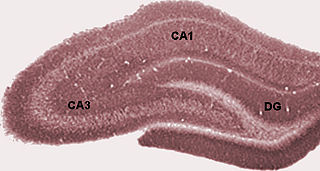Antidepressant screening tests
Antidepressant screening tests, not like the models which can be defined as an [organism] or a particular state of an organism that reproduces aspects of human pathology, provide only an end-point behavioral or physiological measure designed to assess the effect of the genetic, pharmacological, or environmental manipulation.
Despair-based

- Forced-swimming test : [11] The forced-swimming test (FST) is based on the observation that animals develop an immobile posture in an inescapable cylinder filled with water. In this test, immobility is interpreted as a passive stress-coping strategy or depression-like behavior (behavioral despair). After antidepressant administration, the animals will actively perform escape-directed behaviors with longer duration than animals with control saline treatment. FST is the most widely used tool in depression research, more specifically as a screen for acute antidepressants.
- The advantages of FST are that it is low-costing and is a fast and reliable tool, easy to handle and has proven its reliability across laboratories, for testing potential antidepressants activities with a strong predictive validity. Besides, it allows rapid screening of large numbers of drugs. The major disadvantages of FST are that it has poor face and construct validities. The test is sensitive to acute treatment only, and its validity for non-monoamine antidepressants is uncertain

- Tail suspension test : [12] The TST, also known as tail suspension test, shares a common theoretical basis and behavioral measure with the FST. In the TST, mice are suspended by their tails using adhesive tape to a horizontal bar for a certain couple of minutes, and the time of immobility is recorded. Typically, the suspended rodents perform immediately escape-like behaviors, followed by developing an immobile posture. If antidepressants are given prior to the test, the subjects will be engaged in escape-directed behaviors for longer periods of time than after saline treatment, exhibiting a decrease in duration of immobility.
- A major advantage of the TST is that it is simple and inexpensive. A major disadvantage of the TST is that it is restricted to mice and limited to strains that do not tend to climb their tail. Besides, like FST, TST is sensitive to acute treatment only, and its validity for non-monoamine antidepressants is uncertain.
Reward-based
- Sucrose preference: [13] Rodents are born with an interest in sweet foods or solutions. Reduced preference for sweet solution in sucrose preference test represents anhedonia, while this reduction can be reversed by treatment with chronic antidepressants. This test may measure the affective state and motivation of subject rodents; however, the face and construct validity of the sucrose preference test to measure depression-related behavior appears low. [14]
- Intracranial self-stimulation: [13] Intracranial self-stimulation (ICSS) can be utilized in rodents to understand how drugs affect the function of brain reward system. In this paradigm, in which the animal is trained to spin a wheel to receive a current through electrodes implanted in its own brain for rewarding hypothalamic stimulation. ICSS shares a common theoretical basis with the sucrose preference. Reduced preference for self-stimulating for reward cognition represents a loss of interest, fatigue and a loss of energy during depressive episodes, while this reduction can be reversed by treatment with antidepressants. Like sucrose preference test, ICSS can measure the affective state and motivation of subject rodents, and again, further validation is needed for working as a model of depression.

Anxiety-based
- Novelty-induced hypophagia: [15] Hypophagia, one of the anxiety symptoms in rodents, is defined as the reduction in feeding in response to novelty, and it can be evoked by various novel features of the environment, including novel food, novel testing environment and novel food containers. Novelty-induced hypophagia (NIH) is a very recently developed test, which measures the latency and consumption of food in a novel unfamiliar environment. The test rather reflects the anxiolytic effects of antidepressants, and the response is seen only after chronic treatment with antidepressants rather than acute.

- Open field : [16] Rodents tend to avoid brightly illuminated areas, and this avoidance is interpreted as a symptom of anxiety. Open field is a bright enclosure and during the test rodents are placed in this arena thus forced to interact with a novel and bright environment. The movement of the experimental subject will be recorded in distance and pathway.
- Elevated plus maze: [16] For the elevated plus maze test, the rodents are placed at the intersection of the four arms of the maze (two open, two closed), facing an open arm. The number of entries and time spent in each arm is recorded and valid results are obtained in a single 5-minute testing session. An increase in the open-arm time is an index of anti-anxiety behavior of rodents.

- Dark/light box: [16] The dark/light box test is also based on the rodents' innate aversion to brightly illuminated areas and on the spontaneous exploratory behaviour of the animals. A natural conflict situation occurs when an animal is exposed to an unfamiliar environment or novel objects. The conflict is between the tendency to explore and the initial tendency to avoid the unfamiliar. The exploratory activity reflects the combined result of these tendencies in novel situations. The test apparatus of dark/light box consists of a dark compartment and an illuminated compartment. Drug-induced increases in behaviors in the white part of a two-compartment box are suggested as an index of anxiolytic activity.
- Open field test, elevated plus maze test, and dark/light box test can work as an antidepressant screen by measuring anxiety-related behavior as an accompanying endophenotype of depression. It is known that some antidepressants administration will cause a decrease behavior in these tests just like anxiolytics. However, the response to some antidepressants couldn't be detected. Besides, these tests each have their own problems. It is difficult to discriminate decreased anxiety-related avoidance from increased novelty-seeking in these tests.








